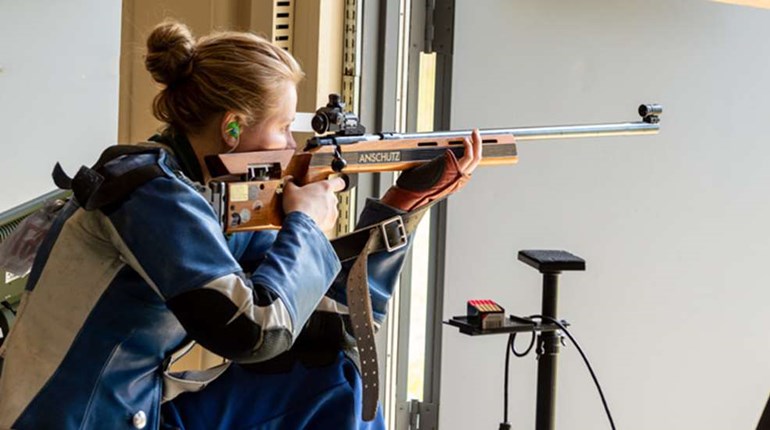
Part 1: Sight Alignment
Intro: The eye is lined up with the top of the front sight, and the location of the rear sight is adjusted (this means moving the gun, and perhaps the head), until an imaginary line between the eye and the front sight passes through the rear sight at the proper spot.
With open sights, having a square rear notch and a Patridge front blade, such as are found on most pistols, the properly aligned front sight should be centered in the rear sight notch, side to side. The top of the blade should appear even with a line extending across the top of the rear sight notch.
When the rear sight eyepiece is an aperture, proper alignment will put the center of the top of the front sight in the center of the rear aperture. Finally, when the front and rear sights are apertures, the eye looks at the front aperture centered in the rear.
Once the sights are aligned, we find a sight picture. To do this, imagine extending the line that defines sight alignment until it touches the target at the desired point of aim. If movement is necessary, move the gun, the shooter and the aligned sights as a unit.
When aiming, your eye should always be focused on the front sight. This is true for two reasons: First, your eye can only focus on one element of a sight picture at a time. The rear sight is too close to the eye to see clearly. If you focus on the target, you will not be able to see the front sight clearly. Second, when you focus on the front sight, you’ll find it much easier to maintain correctly aligned sights through the entire process of firing the shot.
Part II: Sight Picture
Intro: The first priority when choosing the sight picture is to select one that you can see. Generally, four sight pictures are described as useful under a variety of circumstances. They are: “Center of Mass,” “Six o’Clock,” “Line of White” and “Frame.” Each depends on adjustability of the sights to match the circumstances.
Center of Mass (point of aim, point of impact) is simple. Sights are adjusted so the bullet strikes at the point of aim. The aligned sights are placed in the middle of the aiming area and the trigger is pulled.
The Six o’Clock hold is another time-tested technique. The gun is zeroed so that when the aligned sights are brought up even with the bottom of the aiming area, the bullet will strike the center of the aiming area. Target shooters whose guns are fitted with post or Patridge front sights most often use this technique.
Line of White aiming area is halfway between the bottom of the bullseye and the bottom of the target in an area with no reference point. Using a line of white hold puts the aiming area in a blank area of the target where the shooter can concentrate on sight alignment and not be distracted by the bullseye.
A Frame hold is used when the target’s center of mass or the target is obscured or indistinct. It, too, is a target shooter’s technique. A frame hold requires that the shooter center his front sight on the target backer, and frame, completely blotting out the bullseye. As variations, a shooter may center his front sight side-to-side and line up the top of the front sight with the top of the frame, or put the top of the front sight on the top of the berm below the target frame.
Part III: Things to Remember
First: When firing the shot, you start by aligning the sights, establish a sight picture to confirm the aiming area, check sight alignment and then fire.
Second: It is more important to have the sights correctly aligned when the shot is fired than it is to have a perfect sight picture. This is true because error introduced by an incorrect sight picture is parallel. If your sight picture is an inch off, for example, the hit on target will be an inch off of the desired point of impact regardless of the distance to the target. On the other hand, alignment error is angular: The greater the distance to the target, the more the shot will be off from its desired location. For example, if the sights on a rifle, having a sight radius of 30 inches, are misaligned by .016 of an inch, the resulting hit will be displaced by about 3¾ inches at 200 yards, and by just over 11½ inches at 600 yards.







































